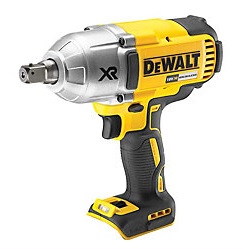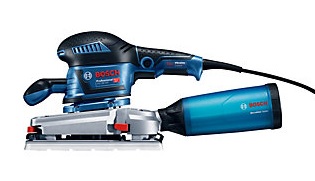Essential Power Tools
Reading time: 9 minutes
Part of your setup will be, of course, getting the right tools for the job, and being prepared for almost anything. This can be expensive if trying to cover absolutely every possible task you might face, which is why we have tool hire for those bigger, more specialised jobs. Also, you’ll probably have the core essential power tools, accessories and hand tools. However, your toolkit will go beyond what many households already have for simple repairs.
So what are the must have tools for someone working as an independent tradesperson?
First Fix and Second Fix Nail Guns
Nail guns are designed to speed up the process of hammering nails, and work by driving a nail into building materials at a high velocity. This is often with compressed air, although other methods include gas propulsion or electromagnetism.
There are two varieties of nail gun for specific uses, the first fix and second fix nail guns.
First fix nail gun
For jobs that require larger nails, sized between 50mm to 88.9mm in length, a first fix, or frame nailer does the job. These are often used for projects such as fencing and shed building, for example.
First fix nail guns are used for:
Rough woodwork, such as flooring and roofing.
Second fix nail gun
A second fix nail gun, also referred to as a brad nailer or finishing nail gun, is often used for projects such as cabinet building, or trims and finishing touches such as fixing mouldings. They fire thin gauged nails, or brads, that measure between 9.52mm and 31.8 mm in length.
Second fix nail guns are used for:
Softer jobs, such as finishing off delicate interior joinery.
Nail gun tips
The fastener of a nail gun driver should be around 1.6mm below the surface of the wood. This can be adjusted by changing the fastener depth through the hose air pressure, however some models will have in-built mechanisms for this.
Like a stapler, nails or pins will come in sticks; always load these chisel point down.
Impact Drivers (or drills) 
Impact drills, or impact drivers, turn screwdriving into a much easier task. With the right adapter they are primarily used for long screws, or can be used to fix lag bolts too, when used as an impact wrench. So why not use a cordless screwdriver? If you’ve ever used a cordless drill and had it stall, this is where an impact driver comes in. Impact drills have two to three times the torque of a cordless screwdriver, so you can drive screws with more precision and impact, while putting less strain on your wrist.
Impact driver tips
Changing the amount of force you apply to a screw or fastener is incredibly useful, particularly if you’re concerned about the toughness of a surface, or the strength of a screw. An adjustable clutch allows for these changes, giving you more flexibility and control.
Brushless motor impact drivers offer better operation by reducing heat output, as well as longer service. This is thanks to an improved performance and reducing overloads.
Impact driver uses:
Carpentry, flooring, landscaping.
 Mitre Saw
Mitre Saw
A mitre saw has a circular blade that can cut at many different angles. This is thanks to the pivoting arm that has a blade mounted to it. The versatility of a mitre saw means you can create expert finishes, such as crown mouldings on cabinets or wall to ceiling joins. If you need to cut deeper, say, into thick lumber, a sliding mitre saw offers far more depth of cutting, however it can be more heavy than a standard mitre saw.
Mitre saw tips
Making several identical cuts? Use a stop block. Set the mitre saw to the correct length, and cut a block of wood at the measurement you need. You can then make a series of cuts to exactly the right measurement.
Wait until a mitre saw reaches maximum speed before cutting. It should only take a few seconds, but ensuring the blade is running at its full speed it should reduce any unexpected jerks or gouges.
Mitre saw uses:
Carpentry, flooring, finishing.
Circular Saw
With its round blade, the circular saw is a popular power tool for its versatility, able to cut quickly and efficiently. A circular saw can handle a variety of materials, from wood to metal, including masonry, and can either be hand-held or table-mounted - which is then referred to as a ‘table saw’. A table saw is often preferable when cutting through long pieces of wood, as it will provide more stability and a track to ensure a straight cut.
Circular saw tips
Setting the right blade depth is essential. If the blade is set too deep it can cause kick-back, and more of the blade is exposed while cutting. While unplugged, retract the blade guard and place it against the wood. Adjust the depth control and turn the base of the saw so the blade sticks out about 6mm – 12mm under the board. You can now fix the depth setting.
To avoid splintering, make sure there’s some support for a piece of wood at the end of a cut, so it can be separated without dropping.
Circular saw uses:
Carpentry, flooring, landscaping.
Reciprocating Saw
Another variation on the electric saw is the reciprocating saw. Based around the design of a hacksaw, it works by a push/pull (or reciprocating) movement. A reciprocating saw doesn’t necessarily have the finesse of a mitre saw, but it’s a lighter tool, which comes in handy for quick chopping of excess wood and simple cuts. Its portability also makes it a key part of your tool kit, making light work of cutting through materials horizontally or vertically.
Reciprocating saw tips
Use lubricant for saw blades. The hotter a blade gets, the quicker it blunts. This is especially true of cutting metal, and blade lubricant keeps the temperature down and reduces clogging.
Use smaller blades if working on smaller projects. Using longer blades can cause unpredictable results like wobbling, vibration and can ultimately slow down your cutting jobs.
Reciprocating saw uses:
Carpentry, window and door fitting, flooring.
Oscillating Multi-Tool 
Hand-held and versatile, an oscillating multi-tool is incredibly useful for those small but essential jobs, and unexpected tasks. These multi-tools work by moving one of the interchangeable attachments back and forth at high speed, so you can work quickly and accurately for a wide range of jobs. Cut, grind, sand, clean, trim... no handy person can do without one of these.
Oscillating multi-tool tips
Choose your blade wisely. For long cuts, a round oscillating saw blade is needed. When you need to make a plunge cut, where you drive the blade into the surface, use a straight blade.
Get cleaner cuts by starting with shallow scoring, taking your time to deepen each time you run the blade over the cut.
Oscillating multi-tool uses:
Carpentry, plumbing, fencing, flooring, landscaping.
 Orbital Sander
Orbital Sander
An orbital sander is designed to give smooth, even finishes to wood. A standard orbital sander moves a round sanding pad in one circular direction, which can leave swirls in wood. A random orbital sander moves the pad in a back and forth motion as well, reducing patterning effects and leaving a more even finish. Having an orbital sander in your arsenal means you get a professional, clean finish on projects that will meet and exceed the expectations of your clients.
Orbital sander tips
Go easy – there’s no need to put any excessive pressure on the tool while cutting. The weight of the orbital sander is enough. Pressing down can cause damage to a surface.
Don’t put the sander to the surface until it’s at full speed, and always sand with the grain of the wood in a left to right movement.
Orbital sander uses:
Carpentry, flooring, finishing.
Angle Grinder
Angle grinders are high-powered tools used for cutting, grinding and polishing, by swapping different power tool accessories, or rather, pads:
-
Cutting disc – straightforward use of cutting metal
-
Grinding wheels/flap discs – often used for preparing tricky surfaces, like carbon steel, for painting
-
Stripping discs – for removing heavy layers of paint or rust from metal
-
Diamond blades – for cutting masonry
Angle grinder tips
Listen to your grinder. If your angle grinder is operating as it should be, there should be a constant pitch of sound. If you need to add more pressure, the grinder will start to make a higher-pitched sound. If you’re pushing it too hard, the tone will be lower.
Spending a little extra on a more powerful angle grinder - with around a 5-9 amp motor - will allow you to use it for more heavy duty jobs, so it’s worth investing in if planning these kinds of projects.
Angle grinder uses:
General construction, automotive.
Lighting Equipment
Because it’s not always something people think about when putting a power tool kit together, lighting can sometimes be overlooked. By having your own on-site lighting, you can have more flexibility as to how and when you work, including starting early on darker mornings, as well as not relying on a building’s own lighting while the electrics are being worked on.
Lighting equipment tips and advice
While it’s important to make sure work is being done in a well-lit space, look out for shadows in corners that might be hiding hazards such as dips, cabling and other obstacles.
Plan ahead. Work out how you need to set up lighting on paper, considering placement, cabling and power points to give the best possible coverage for your workspace.
Extra Batteries
Getting caught with a low battery part way through a job isn’t only annoying, it can be the difference between getting a project done on time and falling behind. Having a set of spare batteries for your power tools charged and ready to go brings an awful lot of peace of mind when you’re out on site.
Battery tips and advice
Treat your batteries like you’d treat any of your other tools. Always make sure they’re well protected when not in use, and stored in protective cases. They should also be stored in cool, dry places for longer life.
Keep your batteries fully charged and constantly used. If you have spare batteries, rotate their usage in your tools.
As you take on more jobs, you’ll find there will be some tools you need that aren’t in the list. But, we have you covered. You can order power tools from top trusted brands, including DeWalt, Makita and Bosch right here at Travis Perkins.
Disclaimer: The information contained on this page is intended as an overall introduction and is not intended as specific advice from a qualified professional. Travis Perkins aims to avoid, but accepts no liability, in the case that any information stated is out of date.











